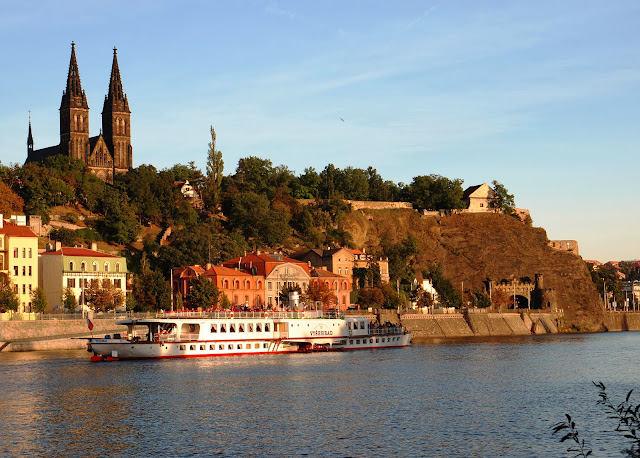Loreta or the Prague Loreto is a remarkable complex of buildings in Hradčany consisting of a cloister, the church of the Lord’s Birth, a Holy Hut and clock tower with a world famous chime. It is a large pilgrimage destination, established more than 300 years ago.The Prague Loreto is an artistic and historical monument, as well as a Baroque pilgrimage site the renown of which in the city can perhaps be compared only with that of the wonder-working statue of the Infant of Prague. Construction of the Prague Loreto Santa Casa began on 3 June 1626, at the instigation of Baroness Benigna Katharina von Lobkowitz. The Loreto arose gradually over the course of the 17th and 18th centuries; the interiors were partly renovated in the 19th century; and in the 1950s and 1960s, a new treasury was built, accessible to the public.The pilgrimage site is conceived as a self-contained complex of buildings around a central Santa Casa, with an oblong, two-storey arcade courtyard (unlike the Italian Loreto, where the Casa is inside the pilgrimage church). The present-day Church of the Nativity of Our Lord and the two chapels were only shallow alcoves with altars in the original design from the 1660s. As the renown of the Loreto grew, the number of visitors increased and it was necessary to enlarge the liturgical spaces of the pilgrimage site. Thus, gradually (by the end of the 17th century) the larger oblong chapels were built in the corners of the courtyard; subsequently, both chapels on the transversal axis were enlarged and the Chapel of the Nativity of Our Lord reconstructed in several phases into a more spacious church.
Church
Christoph Dientzenhofer began the two-phase reconstruction of the church and designed the western façade of the entire complex, which was finished, after his death in 1722, by his son Kilián Ignác, with minor alterations. (The latter is also the author of the design of the terrace with balustrades in front of the façade.) In 1735, Christoph’s stepson, J. G. Aichbauer, finished the final reconstruction of the church, financed (as was most of the interior decoration) by Countess Maria Margarethe Waldstein, née Czernin von Chudenice.The church was consecrated on 7 June 1737, but work on the interior continued until the end of 1738. The principal altar is decorated with an alleged replica of a Renaissance painting of the Adoration (perhaps from the circle of F. Lippi), with a wrought rocaille frame and sculptures of SS Joseph, Joachim, God the Father and the angels, by M. Schönherr (1701-1743). The two side altars of St Felicissimus and St Marcia, with the large reliquary display cases, are located in the chancel. The side altars in the nave have superb Rococo paintings of St Apollonia and St Agatha, by Anton Kern (1709-1747), supplemented at the sides by equally impressive sculptural pairs of cherubs by Richard Prachner.
Santa Casa
The conceptual and actual centre of the complex is the vera effigies, the ‘true form’, of the Italian model (in the Baroque account, the ‘sacrum’ of a cult object was transferred through its external form). The history of the entire pilgrimage site began with the laying of the foundation stone of the house on 3 June 1626. The first patron and founder was Benigna Katharine von Lobkowitz; she chose an Italian in Vienna, G. B. Orsi (died 1641) as the architect of the Casa. The Prague Archbishop, Cardinal Ernst Adalbert Count von Harrach, consecrated the building on 25 March 1631. Originally, the outer walls of the house were decorated only with paintings; it was not until the 1660s and 1670s that the relief panelling of the walls in stucco, made, for the most part, by the Italian G. B. Cometa (1620-1687), was built at the expense of Countess Elizabeth Apollonia Kolowrat. The iconographic program of the decoration (consistently derived from the Italian model) includes reliefs from the life of the Virgin Mary, with an emphasis on the childhood of Christ (the cycle begins on the northern side, turned towards the Chapel of St Francis, and continues counter-clockwise): northern wall – the Nativity of Our Lady, the Betrothal of Our Lady; western wall – the Annunciation, the Virgin Mary visiting St Elizabeth and the Holy Family at the registry in Bethlehem; southern wall – the Nativity of Our Lord, the Adoration of the Shepherds and the Adoration of the Magi; eastern wall – the Death of Our Lady and the Translation of the Holy House from Nazareth to Europe. The relief bays are separated by niches with sculptures of the Old Testament prophets (in the lower storey) and the pagan Sibyls (in the upper storey) – that is, those who foretold the birth of Jesus and the Virgin Mary.The interior is divided into two parts in a traditional manner by a silver (partly wooden) grille partition, with an altar in front. In the smaller space the wonder-working statue of Our Lady of Loreto is situated; made of linden wood, it copies the no-longer extant original made of cedar wood, including the darkening of the original material in the incarnadine parts. The sculpture rests in a rich, wrought silver frame from 1671, with the coat-of-arms of the donor, Countess Elizabeth Apollonia Kolowrat, née Tilly. Most of the objects in the Santa Casa (the reliquaries, obelisks, candlesticks, lamps and liturgical instruments) date from the 17th century. F. Kunz made the artificial fragments of frescoes on the rustic brick masonry of the house.








